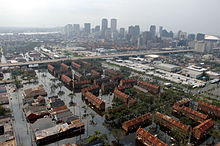 Like many other service professionals, registered Insurance agents and adjusters are required to stay up to date with the latest rules, regulations, and best practices of their industry through regular Insurance Continuing Education (CE) training. While each state has its own unique licensing requirements, all states require some level of periodic Insurance CE to maintain a license in that state.
Like many other service professionals, registered Insurance agents and adjusters are required to stay up to date with the latest rules, regulations, and best practices of their industry through regular Insurance Continuing Education (CE) training. While each state has its own unique licensing requirements, all states require some level of periodic Insurance CE to maintain a license in that state.Typically, a minimum number of insurance CE credits must be earned every two years. The providers of continuing education training must themselves be certified to train in the state in which the insurance professionals are licensed.
Once an exam is passed the results are submitted to the state's licensing board where the credits are recorded. A minimum number of credits must be passed within a two year period in order to renew their license.
There are certain advantages gained by learning in a classroom environment. Most everyone went through school in a similar learning environment and so it is a familiar venue. Insurance agents and adjusters can meet each other, network, compare notes and discuss the lecture. There are some disadvantages to this learning model however, which include:
- The costs associated with this kind of training are high due to the need to rent classroom space and hire a professional trainer, as well as the associated travel and lodging costs.
- Most classes are offered during the week during business hours, causing lost productivity.
Insurance is a very competitive business. Time away from the office may result in lost opportunities or a backlog of work which needs to be attended to. To address these deficiencies, online insurance continuing education courses provide a number of advantages not found in the classroom, including:
- Online insurance CE training is available at any time (including nights or weekends). It's accessible whenever the professional has some spare time in his or her schedule.
- Students can move through course material at their own pace.
- Insurance professionals who are licensed to work in several states can fulfill their CE requirements at one time and place.
- Some online insurance CE providers allow unlimited test re-takes, until the candidate passes.
- Reminders of individual Insurance Continuing Education deadlines are sent via email to ensure timely completion of course requirements.
- Reporting of training credits to the licensing board is done automatically by some online insurance CE course providers upon exam completion (where this is allowed by the individual state).
Online training courses are typically delivered via slide presentation using a computers web browser. Most people know how to use a web browser and therefore require no additional training.
Insurance professionals should choose an online Insurance CE provider that includes audio training as a complement to on-screen slides. For example, the audio can be downloaded as a "podcast" and the insurance professional can listen and learn while driving to an appointment.








 23:37
23:37
 samina pervaiz
samina pervaiz















